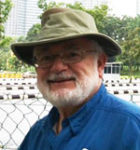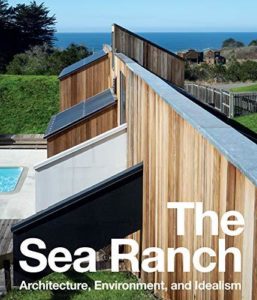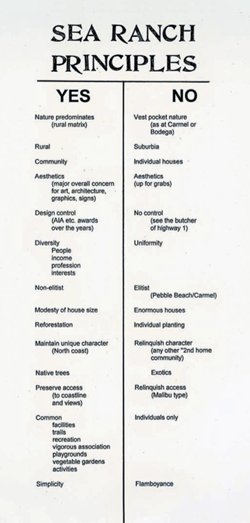By Oliver B. Pollak

 SAN FRANCISCO — In 2004 my law partner and I went to Washington DC for a conference. Our sightseeing included The Watergate, Jewish War Veterans Museum, and the Franklin Delano Roosevelt Memorial on the Mall. The Memorial first conceived in 1960, authorized in 1974 with Lawrence Halprin’s winning design went unfunded by Congress for 20 years and opened in 1997. It is dark and foreboding exuding a fortress mentality, carrying the burden of the Depression and the War. The designer’s name, Lawrence Halprin, was unfamiliar to me.
SAN FRANCISCO — In 2004 my law partner and I went to Washington DC for a conference. Our sightseeing included The Watergate, Jewish War Veterans Museum, and the Franklin Delano Roosevelt Memorial on the Mall. The Memorial first conceived in 1960, authorized in 1974 with Lawrence Halprin’s winning design went unfunded by Congress for 20 years and opened in 1997. It is dark and foreboding exuding a fortress mentality, carrying the burden of the Depression and the War. The designer’s name, Lawrence Halprin, was unfamiliar to me.
In 2017 my wife and I drove up the coast from San Francisco to Vancouver and lunched at the Sea Ranch Lodge in Sonoma County about 100 miles north of San Francisco. It was delightful, light and airy. The sea’s bounty on our plates and the expansive sea view almost surrounding us ecstatically fed each other. The designer, Lawrence Halprin, preeminent landscape architect, still meant nothing to me.
I did not make the architectural connection until mid 2018 when the San Francisco Museum of Modern Art announced an exhibit, The Sea Ranch, Architecture, Environment and Idealism, to open in December 2018, It gave me the chance to dispel my ignorance.
The inspirational differences between Sea Ranch and FDR lie in America’s history and Halprin’s life;in nation building in Palestine and Israel, and in national preservation during Roosevelt’s four terms as President. Roosevelt served through America’s financial crisis, war in Asia and Europe, and the need for homeland defense.
Lawrence or Larry Halprin was born in 1916 in Brooklyn. His mother, Rose Luria Halprin, was an ardent Zionist and twice national president of Hadassah, 1932-34 and 1947-52. Lawrence had his Bar Mitzvah in Jerusalem, spent three summers, 1933-36, on kibbutz Ein Hashofet near Haifa. He established a lifelong connection with Jerusalem. He attended Cornell. At Wisconsin he met his future wife of 69 years, postmodern dancer Anna Halprin. He visited Taliesin, 55 miles from Madison, and was influenced by Frank Lloyd Wright. He finished his formal education at Harvard and then served in the Navy. The couple moved to San Francisco in 1949. Lawrence died in 2009 at the age of 93. Anna is still alive.
The kibbutz experience is sympathetic with The Sea Ranch ideal, living in and preserving nature, non-elitist modest hosing, and reforestation. And the FDR Monument commission may have been influenced by his war experience. Halprin was commissioned as a lieutenant (junior grade) in the Navy and served on the destroyer USS Morris in 1944 and survived a kamikaze attack in April 1945.
This Palestine romance and promise of a future bright with community building in the 1930s influenced the possibilities of the early 1960s, The Sea Ranch project. The Second World War colored the 1974 design winning FDR competition, constructed in the mid 1990s
The Sea Ranch pioneered an environmentally friendly community for 1500 residents on 5,000 acres set in a natural environment. The SFMOMA exhibit includes a reconstruction of a two story condominium, a life size photograph of the ocean view, architect sketches and diaries.
 Halprin’s architectural landscapes enrich San Francisco’s Ghirardelli Square, Sproul Plaza at the University of California in Berkeley, Minneapolis, Portland, Seattle, Los Angeles, Yosemite, Oahu, and other cities, as well as two false starts in San Diego and the Scripps Institute of Oceanography. Halprin’s commissions in Israel included Hadassah Medical Center, Hebrew University, Israel Museum, and the Ben Yehuda Pedestrian Mall.
Halprin’s architectural landscapes enrich San Francisco’s Ghirardelli Square, Sproul Plaza at the University of California in Berkeley, Minneapolis, Portland, Seattle, Los Angeles, Yosemite, Oahu, and other cities, as well as two false starts in San Diego and the Scripps Institute of Oceanography. Halprin’s commissions in Israel included Hadassah Medical Center, Hebrew University, Israel Museum, and the Ben Yehuda Pedestrian Mall.
A beautiful coffee table book, The Sea Ranch: Architecture, Environment, and Idealism by Jennifer Dunlop Fletcher and Joseph Becker accompanies the exhibit. It contains, at left, the graphic enunciation of contrasting planning visions of human habitation.
In 1960 California had 15.9 million inhabitants, second in size to New York. Today it is nationally preeminent at 40 million; the US rose from 180 million to 330 million. The Sea Ranch captures mid-century environmental idealism and Halprin’s vision. The exhibit will be on display at SFMOMA until April 28, 2019. The exhibit will not travel – “it’s hard to move a replica of a house.”
*
Pollak, a professor emeritus of history at the University of Nebraska Omaha, and a lawyer, is a correspondent now based in Richmond, California. He may be contacted via oliver.pollak@sdjewishworld.com
Thank you so much for this added tidbit to the interconnected history of The Sea Ranch and its designers. Also note, that recently the SFMOMA added in conjunction with The Sea Ranch Exhibit, a display of supergraphic designs by Barbara Stauffacher Solomon. You will remember her as the artist who not only created the Sea Ranch Rams Horn logo but also painted the interior artwork found in the public spaces at The Sea Ranch: The Lodge (which is currently closed and placed up for sale), and the recreation centers, most notably the Moonraker Center.
One other little side note on Sea Ranch’s history, which may challenge your comparison of it to a kibbutz. The Sea Ranch was originally a private commercial venture created under an inspirational ideal with intent to keep all other non-paying members out. While it did have utopian aspirations at least with regard to design it was mainly created as the antidote to suburban sprawl for second-home owners.
There’s one other bit of trivia that anchors the Sea Ranch to Californa coastal development as we now know it. A lawsuit was brought to the state by many who were refused access to this area previously available to the public. As a result, it and other coastal areas like it, are now required to provide public-communal- access to its beautiful beaches and coasts. In fact, it was the impetus for the creation of the California Coastal Commission whose duty today is to assure access to the coast for all.
We welcome you back to revisit and get to know even deeper our little “kibbutz” on the coast. We partner with a local guide who provides tours that delves deeper into the architecture, environment, geology, and inspiration that made Sea Ranch what it is today.